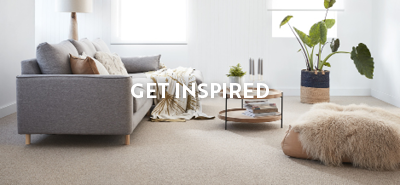
Heather Nette King is a Melbourne-based interiors stylist and writer for many leading interior titles and newspapers. The hallmarks of her styling are colour and vibrancy, and she writes passionately about peoples’ homes and how they live in them.
Taking the step from old to new – how to integrate your flooring when you add space to your home.
Buying and renovating a lovely old home is undoubtably one of the great Australian dreams. There is such excitement and romance surrounding the notion that a home which has already stood the test of time can be loved again and reimagined into the dream home of your future. I’ve done this four times now and let me tell you the excitement doesn’t wane. If anything, it grows, as does my confidence in making right decisions about keeping the best of the old and blending it with the fabulous new.
One of the questions I am most often asked by renovators is ‘How do I make the right decisions about my floors?’ Indeed, it is one of the most important resolutions you may need to make, and one of the first, so here is my guide to help you consider all of your options and choose the floors that are perfect for your dream home ‘new/old’ home.
Q. My original home is Edwardian/Victorian but I’m planning a very contemporary extension – what should I do with my floors?
A. The first thing you should consider is the colour of the existing boards – do you like the colour, and are you happy to see it continued through to the new addition? Or will you change the colour of the existing floor by having it sanded and stained, say for example, from a mid-brown, to a paler blonde look? Once you have decided on that colour, then either take a sample of the old boards to your nearest Carpet Court, or you can take home samples from the store in order to see how they look against your refreshed boards, in your own rooms.
Many older homes have elegant, wide floorboards in Baltic pine or oak so look for new boards in a very similar width, such as Carpet Court’s Laneway Rich Oak or Oak Essentials. The ‘Henley' colour is a wonderfully warm shade that will complement older boards, as well as a contemporary extension.
My home is mid-century, with narrow floorboards and terrazzo tiles - how should I make my new extension work?
We are seeing such a big appreciation for the mid-twentieth century style of architecture at the moment. I think it is driven not just by nostalgia, but by the clean lines of the buildings, an acknowledgment of the benefits of letting in more natural light, and also their ability to be renovated and extended in a way that is really cohesive with current housing trends.
Exposed floorboards became very popular during this time, as did parquetry, and stone floors such as terrazzo. These flooring types are all enjoying a similar revival of popularity, so they would also be my go-to for any extensions to mid-century homes. In high-traffic areas or a wet area such as laundries, I’d consider the Elements Hybrid Tiles in the ‘Fossil’ which is reminiscent of terrazzo stone flooring. It’s a pre-sealed click and lock product that is very easy to install, just like floating floorboards.
For the living areas I would be hard-pressed not to choose one of the beautiful Herringbone or Chevron floors, in either a laminate such as one from the Masterpieces range or the stunning timber GrandOak Herringbone.




What about the join between the old and the new – how do I make it work?
You have two choices here – you can go for a seamless blend of the old and new by choosing a similar floor to that which is in the existing part of your home; or you can make a bolder choice to really define and accentuate the change, and there are a wealth of stunning ways to achieve this.
For a seamless transition from the old to the new flooring, try to match the following features:
- The width of your floorboards
- The colour and tone of your floorboards
- The timber style, i.e. are they fairly uniform, or do they feature knots and natural in the wood?
If, on the other hand, you would like to really highlight the distinction between the old home and your contemporary addition, there are a couple of very cool ways to do this:
- Where the old boards intersect with the new, consider inserting a strip of another material altogether, such as a thin brass rod, or a piece of marble or another stone. By making the join appear obvious, it is like having a little celebration of the old and the new – and why not?
- In a few homes I have visited, the owners have treated the hallway space that adjoins the two architectural periods in a super-dramatic way, by creating almost a tunnel, where the walls and floor are decorated in a style entirely different to that on either side. One was a tunnel of matte black iron, the other was concrete and glass.
Either way, the transitional floor space is something that can be treated beautifully, wither by blending or accentuating it. All it takes is a little imagination, so step to it.
NEED MORE INSPIRATION
View more of our Seasonal Trends articles or check out our Influencers Collaborations for more interior ideas and design tips.

Taking the step from old to new – how to integrate your flooring when you add space to your home.
Buying and renovating a lovely old home is undoubtably one of the great Australian dreams. There is such excitement and romance surrounding the notion that a home which has already stood the test of time can be loved again and reimagined into the dream home of your future. I’ve done this four times now and let me tell you the excitement doesn’t wane. If anything, it grows, as does my confidence in making right decisions about keeping the best of the old and blending it with the fabulous new.
One of the questions I am most often asked by renovators is ‘How do I make the right decisions about my floors?’. Indeed, it is one of the most important resolutions you may need to make, and one of the first, so here is my guide to help you consider all of your options and choose the floors that are perfect for your dream home ‘new/old’ home.
Q. My original home is Edwardian/Victorian but I’m planning a very contemporary extension – what should I do with my floors?
A. The first thing you should consider is the colour of the existing boards – do you like the colour, and are you happy to see it continued through to the new addition? Or will you change the colour of the existing floor by having it sanded and stained, say for example, from a mid-brown, to a paler blonde look? Once you have decided on that colour, then either take a sample of the old boards to your nearest Carpet Court, or you can take home samples from the store in order to see how they look against your refreshed boards, in your own rooms.
Many older homes have elegant, wide floorboards in Baltic pine or oak so look for new boards in a very similar width, such as Carpet Court’s Laneway Oak or Project Oak. The ‘Butterscotch’ colour is a wonderfully warm shade that will complement older boards, as well as a contemporary extension.
Q. My home is mid-century, with narrow floorboards and terrazzo tiles - how should I make my new extension work?
A. We are seeing such a big appreciation for the mid-twentieth century style of architecture at the moment. I think it is driven not just by nostalgia, but by the clean lines of the buildings, an acknowledgment of the benefits of letting in more natural light, and also their ability to be renovated and extended in a way that is really cohesive with current housing trends.
Exposed floorboards became very popular during this time, as did parquetry, and stone floors such as terrazzo. These flooring types are all enjoying a similar revival of popularity, so they would also be my go-to for any extensions to mid-century homes. In high-traffic areas or a wet area such as laundries, I’d consider the Elements Hybrid Tiles in the ‘Bronze’ which is reminiscent of terrazzo stone flooring. It’s a pre-sealed click and lock product that is very easy to install, just like floating floorboards.
For the living areas I would be hard-pressed not to choose one of the beautiful Herringbone or Chevron floors, in either a laminate such as one from the Masterpieces range or a stunning timber from the DeMarque ranges.
Q. What about the join between the old and the new – how do I make it work?
A. You have two choices here – you can go for a seamless blend of the old and new by choosing a similar floor to that which is in the existing part of your home; or you can make a bolder choice to really define and accentuate the change, and there are a wealth of stunning ways to achieve this.
For a seamless transition from the old to the new flooring, try to match the following features:
- The width of your floorboards
- The colour and tone of your floorboards
- The timber style, i.e. are they fairly uniform, or do they feature knots and natural in the wood?
If, on the other hand, you would like to really highlight the distinction between the old home and your contemporary addition, there are a couple of very cool ways to do
this:
- Where the old boards intersect with the new, consider inserting a strip of another material altogether, such as a thin brass rod, or a piece of marble or another stone. By making the join appear obvious, it is like having a little celebration of the old and the new – and why not?
- In a few homes I have visited, the owners have treated the hallway space that adjoins the two architectural periods in a super-dramatic way, by creating almost a tunnel, where the walls and floor are decorated in a style entirely different to that on either side. One was a tunnel of matte black iron, the other was concrete and glass.
Either way, the transitional floor space is something that can be treated beautifully, wither by blending or accentuating it. All it takes is a little imagination, so step to it

Get the Carpet Court Look
- Timber Flooring DeMarque in Herringbone Ash
- Timber Flooring Project Oak in Butterscotch
- Hybrid Tiles Elements in Bronze










